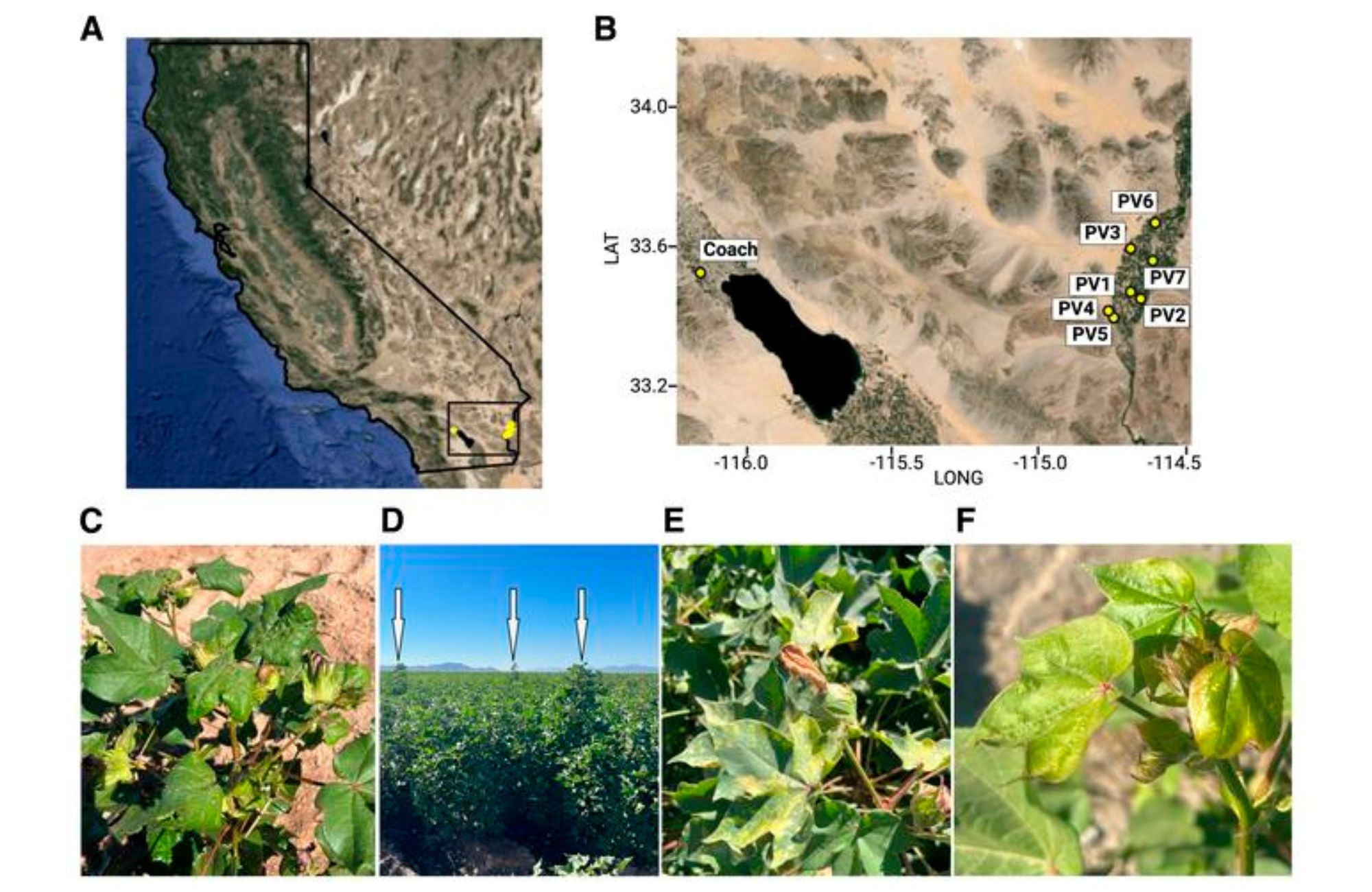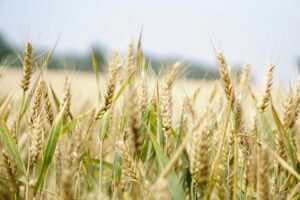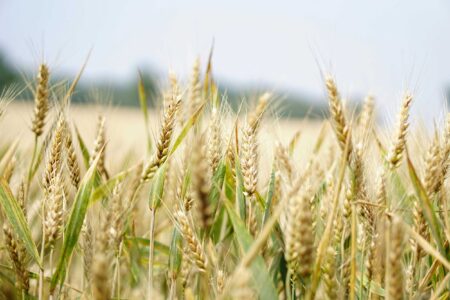A virus responsible for damaging cotton crops across the southern United States has been lurking in U.S. fields for nearly 20 years — undetected. According to new research, cotton leafroll dwarf virus , long believed to be a recent arrival, was infecting plants in cotton-growing states as early as 2006.
The findings, published in Plant Disease by the U.S. Department of Agricultural Research Service researchers and cooperators at Cornell University, challenge long-standing assumptions about when and how the virus emerged in U.S. cotton. They also demonstrate how modern data-mining tools can uncover hidden threats in samples collected well before the virus was on anyone’s radar.
“CLRDV was officially detected in 2017, so the assumption was that it had only recently entered the U.S.,” said Alejandro Olmedo-Velarde, formerly a Cornell postdoctoral associate and now Assistant Professor in the Department of Plant Pathology, Entomology, and Microbiology at Iowa State. “Our study shows that this virus was actually present in the country’s Cotton Belt long before that. We found clear evidence of the virus in samples from 2006 in Mississippi, 2015 in Louisiana, and 2018 in California.”
To confirm the findings, the team conducted field surveys in 2023, collecting fresh cotton samples in Southern California. Lab testing confirmed that CLRDV is currently present in California — marking the state’s first official report of the virus.

The team’s approach relied heavily on reanalyzing existing data in public genetic databases. By mining these datasets, the researchers uncovered viral sequences that closely matched current U.S. strains, offering a more complete picture of CLRDV’s spread over time and geography. The study underscores the importance of maintaining easily accessible, publicly available databases for improving future disease surveillance and preparedness.
In an unexpected twist, the researchers also identified traces of the virus in an unusual location: a sample from the gut of a cow studied by researchers in California. Their data are consistent with the hypothesis that the cow ingested CLRDV-infected plant-based animal feed. While this does not suggest that animals are infected, it adds a new dimension to understanding the timeline and extent of CLRDV infection in the U.S. prior to the official first report.
The study also reignites interest in an unresolved issue in cotton pathology: bronze wilt. The researchers propose a potential connection between CLRDV and bronze wilt symptoms, a topic that has sparked debate in the past. “Now, as more studies align with our findings, the idea is gaining traction,” said Olmedo-Velarde. “It could help explain long-standing crop losses and inform virus monitoring strategies moving forward.”
Agricultural Research Service Scientist Dr. Michelle Heck explains, “For growers, the findings offer both a caution and a call to action. CLRDV has been in U.S. fields far longer than anyone realized, and it may be more widespread than current reports suggest. Understanding how and why the virus remained under the radar for so long — and why it’s becoming more of a problem now — will be critical for developing effective management strategies.”
The research highlights the growing role of bioinformatics, plant pathology, and cross-disciplinary collaboration in modern agriculture — and shows that existing data may already contain the clues we need to detect emerging threats earlier.


:max_bytes(150000):strip_icc()/Farmall_Utilty_120C_L635_1397_01-25copy-8c778723dcab4769b9f384a4309c201a.jpg)
:max_bytes(150000):strip_icc()/44467609092_de0dd33a28_o-ea570461a64240d9bdad9717b3374b48.jpg)





:max_bytes(150000):strip_icc()/Markets-2-Storm-candlestick-up-9-4bd8982c0a6b4c0e9e01a0d2bcb070ed.jpeg)
:max_bytes(150000):strip_icc()/Solix_Horizontal-9887bea565a048d88cdb7f658e757827.jpeg)
:max_bytes(150000):strip_icc()/54673504072_63b6d5500a_o-a07f17332d2e4bce8a229a525e60579b.jpeg)